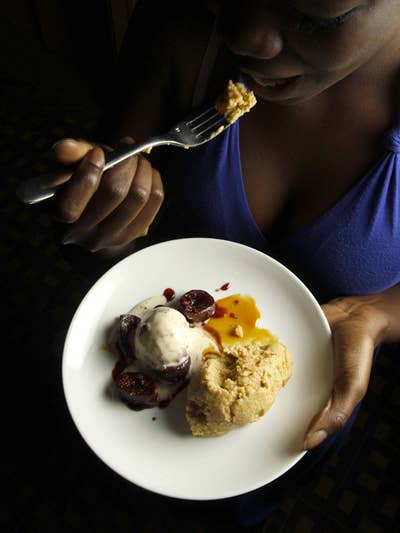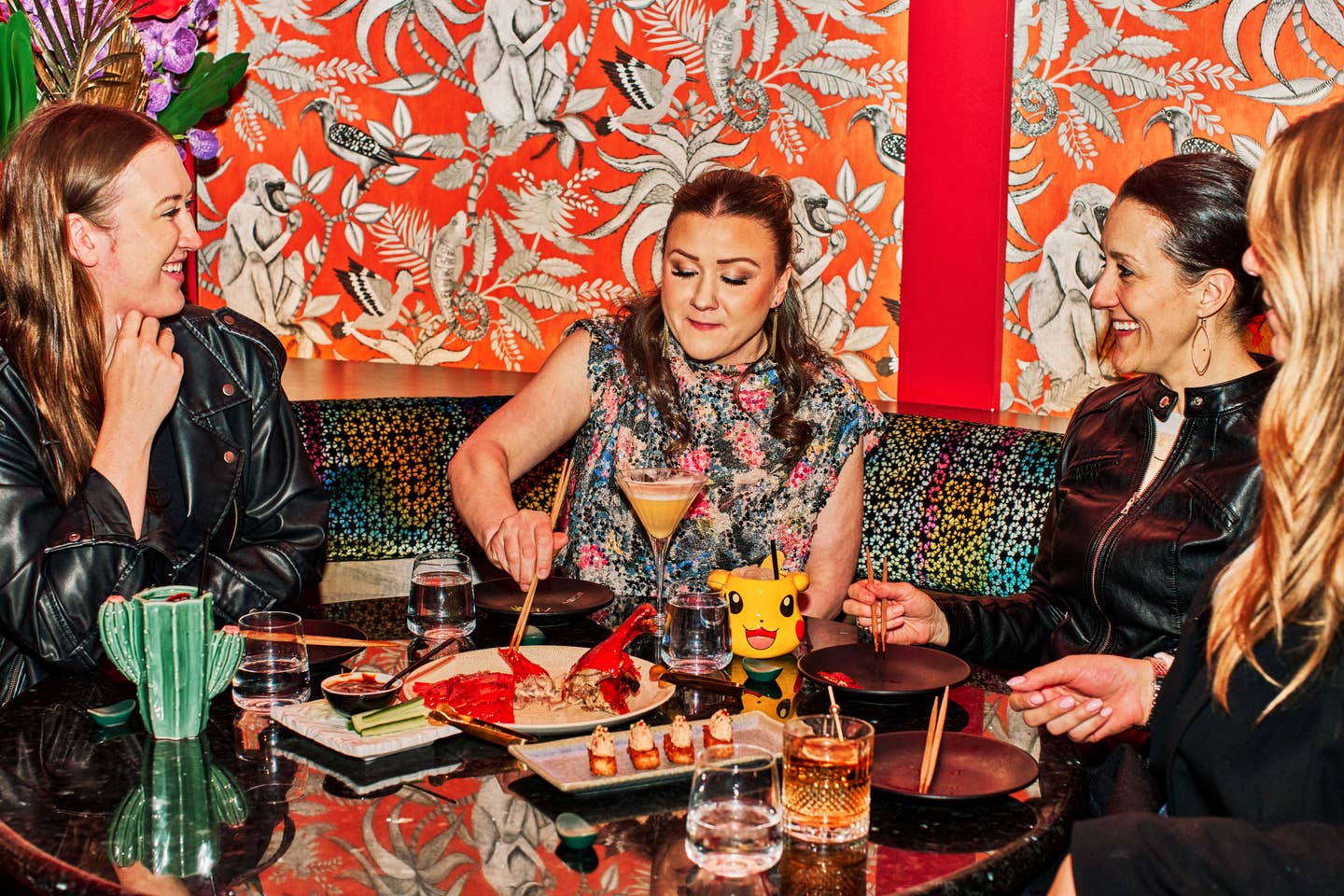
Looks Aren’t Everything: An Ode to Indian Pudding
Mention Indian pudding to a non-New Englander, and you'll likely draw a blank stare. Though it has always been staple on Thanksgiving tables in New England, and was known throughout the country well into the 20th century, the humble corn custard has largely drifted off the modern-day culinary map. Some older Yankees may harken back to memories of eating the colonial curiosity as children, but there are even more who have simply never heard of it.
Historians trace this uniquely American dessert as far back as the 17th century. It most likely descended from England's hasty pudding, a sweetened stove-top porridge made by stirring boiling milk or water with wheat flour. Indian pudding, however, uses cornmeal, which was abundant to early settlers in New England, while wheat was not. ("Indian meal" was what settlers called cornmeal.) Molasses, meanwhile, which was being produced in massive amounts to produce rum, was a readily available, inexpensive sweetener during Boston's rum trade in the 17th and 18th centuries. And unlike its British predecessor, Indian pudding is baked for a long time at a low temperature, a reflection of the hearth that was central to the early New England kitchen, which radiated heat for hours after the weekly baking was done. The pudding would have sat in that ambient warmth until it set. A uniquely new-world dish was born.
An early formative experience with Indian pudding has had me praying for its revival. I fell in love with the dessert when I was living in Cambridge, Massachusetts, and first tried it at Durgin Park, a restaurant that specializes in traditional New England foods. Though the coarse, lumpy custard—tinted brown with molasses, cinnamon, and ginger—wasn't much to look at, served warm with a scoop of vanilla ice cream, it was comfort in a bowl.
I have baked countless Indian puddings since, but I was still interested to learn why I so rarely encountered the dish outside my home. So I contacted Kathleen Wall, Plymouth Plantation's colonial foodways expert. "[Among early settlers] it was a commonplace dish," confirmed Wall. While Indian pudding never went out of style in New England, it wasn't until the second half of the 19th century, when all things Early American were in fashion, that Indian pudding started to show up on Thanksgiving tables in the rest of the country as a celebration of those newly cherished customs.
In the 1920s and 1930s, the dish slipped from favor in much of the US. One reason was the rise of packaged puddings in popular flavors like chocolate, with more desirable silky textures. What's more, Indian pudding requires hours in the kitchen, and time is a convenience many 20th century cooks do not possess. Today, the American regional foods revival that has brought renewed enthusiasm to pimento cheese and po'boys has yet to discover Indian pudding.
I was happy to discover that it's still on the menu at Durgin Park, and there is a smattering of chefs offering the dessert elsewhere in the country. For example, at Chicago's Hearty restaurant, chef Dan Smith, a former Maine resident, offers the specialty with a dollop of creme fraiche. And chef Ed Brown, of Ed's Chowder House in New York City, says he put it on his menu last winter and "mostly gave it away because people don't know what it is." No matter—I know it will be on my Thanksgiving table this year, and always.
Keep Reading
Continue to Next Story










